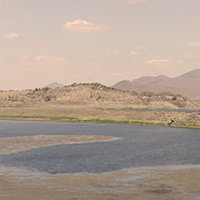Influence of submerged macrophytes on phosphorus in a eutrophic reservoir in a semiarid region
Influence of submerged macrophytes on phosphorus

Submitted: 13 July 2019
Accepted: 14 January 2020
Published: 3 February 2020
Accepted: 14 January 2020
Abstract Views: 1739
PDF: 586
HTML: 71
HTML: 71
Publisher's note
All claims expressed in this article are solely those of the authors and do not necessarily represent those of their affiliated organizations, or those of the publisher, the editors and the reviewers. Any product that may be evaluated in this article or claim that may be made by its manufacturer is not guaranteed or endorsed by the publisher.
All claims expressed in this article are solely those of the authors and do not necessarily represent those of their affiliated organizations, or those of the publisher, the editors and the reviewers. Any product that may be evaluated in this article or claim that may be made by its manufacturer is not guaranteed or endorsed by the publisher.
Similar Articles
- Clara E. Moreno, Eirik Fjeld, Min K. Deshar, Espen Lydersen, Seasonal variation of mercury and δ15N in fish from Lake Heddalsvatn, southern Norway , Journal of Limnology: Vol. 74 No. 1 (2015)
- María Antonia Rodrigo, Adriana García, Allan R. Chivas, Carbon stable isotope composition of charophyte organic matter in a small and shallow Spanish water body as a baseline for future trophic studies , Journal of Limnology: Vol. 75 No. 2 (2016)
- Malgorzata Adamczuk, Niche separation by littoral-benthic Chydoridae (Cladocera, Crustacea) in a deep lake - potential drivers of their distribution and role in littoral-pelagic coupling , Journal of Limnology: Vol. 73 No. 3 (2014)
- Bardukh Gabrielyan, Alla Khosrovyan, Martin Schultze, A review of anthropogenic stressors on Lake Sevan, Armenia , Journal of Limnology: Vol. 81 No. s1 (2022): Lake Sevan. Past, present, and future state of a unique alpine lake
- Daniele Paganelli, Renato Sconfietti, Biodiversity loss in a small riverine wetland of the Ticino river (Lombardia, Northern Italy) , Journal of Limnology: Vol. 72 No. 3 (2013)
- Pablo S. Guimarães, Layanna Zigiotto, Marinês Garcia, Maria J. Dellamano-Oliveira, Armando A.E. Vieira, Danilo Giroldo, Phytoplankton relationship with bacterioplankton, dissolved carbohydrates and water characteristics in a subtropical coastal lagoon , Journal of Limnology: Vol. 72 No. 3 (2013)
- Peifang Wang, Lingxiao Ren, Chao Wang, Jin Qian, Jun Hou, Presence and patterns of alkaline phosphatase activity and phosphorus cycling in natural riparian zones under changing nutrient conditions , Journal of Limnology: Vol. 74 No. 1 (2015)
- Tomasz Mieczan, Małgorzata Adamczuk, Monika Tarkowska-Kukuryk, Dorota Nawrot, Effect of water chemistry on zooplanktonic and microbial communities across freshwater ecotones in different macrophyte-dominated shallow lakes , Journal of Limnology: Vol. 75 No. 2 (2016)
- Francisco Diogo R. Sousa, Alexandre V. Palaoro, Lourdes M.A. Elmoor-Loureiro, Alexey A. Kotov, Predicting the invasive potential of the cladoceran Daphnia lumholtzi Sars, 1885 (Crustacea: Cladocera: Daphniidae) in the Neotropics: are generalists threatened and relicts protected by their life-history traits? , Journal of Limnology: Vol. 76 No. 2 (2017)
- Kathleen R. Laird, Biplob Das, Brittany Hesjedal, Peter R. Leavitt, Graham R. Mushet, Kenneth A. Scott, Gavin L. Simpson, Bjorn Wissel, Jared Wolfe, Brian F. Cumming, Paleolimnological assessment of nutrient enrichment on diatom assemblages in a priori defined nitrogen- and phosphorus-limited lakes downwind of the Athabasca Oil Sands, Canada , Journal of Limnology: Vol. 76 No. 3 (2017)
<< < 3 4 5 6 7 8 9 10 11 12 > >>
You may also start an advanced similarity search for this article.

 https://doi.org/10.4081/jlimnol.2020.1931
https://doi.org/10.4081/jlimnol.2020.1931





